SW-Iberia January 2019
By David Broek, Alfred Kok, Gerben Krösschell & Remco Ploeg
Visited sites in Portugal and Spain

20th of January 2019
Being done with winter and longing for some herps, we were planning for a nice trip again. Even in mid-winter, southwestern Iberia is a good place for herping. So when David found some ridiculously cheap tickets to Faro, plans were made soon and together with Remco and newbies Alfred and Gerben, we escaped to the mild Mediterranean winter. After a smooth flight (even for Alfred who passed through his airplane defloration while being ill), we arrived in the evening and soon where driving to our first stay near Faro. On our way, we found our first herp of the trip; a fresh road-killed Iberian Painted Frog (Discoglossus galganoi). When searching for a while in a huge golf-resort complex, we arrived at our accommodation. Because the over-luxurious ambiance of the whole place, we thought it had to be a mistake since we only payed 50 euros for the four of us, but the receptionist showed us the way to our apartment and soon we could dump our luggage in the most roomy and clean place we ever stayed. We couldn't wait to go out herping, but we still didn't had a decent meal so we decided to find some food first at 22:00. We didn’t expect getting a late dinner as something difficult in southern Europe, but surprisingly nobody wanted to serve us anything edible at all at this time. We gave up and tried to forget our empty stomachs by herping in the dunes. In a few minutes, we found several Moorish Geckos (Tarentola mauritanica) in a bird observatory cabin. At the edge of a large pond, Alfred spotted a sleeping Spanish Pond Turtle (Mauremys leprosa). Unfortunately, it was refusing to wake up despite the bright lights of our flashlights, which made it hard to make a good looking picture of it. However our flashlights didn't remain unnoticed in the neighbouring golf-resort, and soon the park security came to check. We told him what we were doing and luckily they didn't mind and we could continue searching. At the banks of the same pond, we found some Perez' Water Frogs (Pelophylax perezi) and a nice looking mantis (Empusa penata). However, one of our main targets for this trip, the Mediterranean Chameleon (Chamaeleo chamaeleon) remained secretive. Luckily, David had some experience with this species and knew that Stone pines (Pinus pinea) are one of the favourite hangouts for chameleons. After searching all branches of all pines in the area, we didn't had much success and decided to slowly walk back to the car. When walking, we saw something strikingly yellow in the dark green needles of a pine. From a distance, it looked like a piece of plastic, but a closer look let us realize it was a chameleon! Although it was a tiny juvenile specimen, we were more than happy with this sight. What a wonderful creature and a nice species to finish our first day.
21th of January 2019
When we woke up and looked through the windows, the first thing we saw was a group of Iberian Magpies (Cyanopica cooki). This interesting species is well-known because of its disjunct distribution, with its closest relative, the Azure-winged Magpie (Cyanopica cyana) occurring 9000 kilometres away in the far east. A nice start of the day, but we still had something important to do; finding something edible. Luckily, there was a small supermarket in our park, and after filling our stomachs, we could think about our plans for the rest of the day again. We first went back to the dunes we visited the previous night, hoping for some diurnalreptiles and a better shot of Spanish pond turtle. At a sun exposed slope at the edge between dunes and estuary, Remco soon found a beautiful Horseshoe Whip Snake (Hemmorhois hippocrepis), but the snake was too fast (or Remco was too slow, as the others were complaining, but they were just not good enough to find their own snakes) and it remained a solo-species. Underneath a plate that was partly laying in a muddy ditch, we found some Peacock Blennies (Salaria pavo), an unexpected, but more than welcome sight! In the large ponds, we didn't succeed in finding another Spanish pond turtle, but we did found some basking Pond Sliders (Trachemys scripta) instead. Besides, a lot of birds were present, with Spotless Starling (Sturnus vulgaris), Zitting Cisticola (Cisticola juncidis), Western Swamphen (Porphyrio porphyrio) and Glossy Ibis (Plegadis falcinellus) being the highlights. After finding some way too fast Psammodromusses, that couldn't be identified safely, but probably were Large Psammodromus (Psammodromus algirus), Alfred almost walked over a huge adult chameleon. Although the species was not new, it was really worth it to see this gorgeous, full-grown specimen.
We had some distance to cover, so we left the Faro dunes and followed the A22 in direction of Spain. Near Huelva, we planned to stop near an industrial ruin, but apparently our preparation homework wasn’t done properly, because we ended up in a dumping ground instead. On top of that, there were actually people living there surrounded by waste. We decided to search for a while anyway, and did found some brown snakes which have the strange habit to cover themselves in toilet paper. Also a wide array of skull types (luckily only from animals) was scattered over the area. Despite this small success, we left this wonderful place soon and went to a somewhat more natural site, the Doñana National Park. We made a quick stop near one of the visitor centres, were we found two sub-adult Sharp-ribbed newts (Pleurodeles waltl) underneath a log, some Perez' water frogs and a Moorish gecko. When walking the boardwalk, we saw a Dartford warbler (Sylvia undata), but the sun was already low and we didn't saw any herps. Back at the visitors centre, we turned some heavy concrete plates near the toilet building, but it turned out these plates were not accidently laying there, based on the high concentration of brown snakes underneath it. However, we did found a small but beautiful Southern marbled newt (Triturus pygmaeus) underneath another plate. Because we got hungry, we drove to our next stay in El Rocio, a small Western style village where you have to share the dirt roads with cowboys and horses. After checking in, we again had some struggles with finding something edible, but at 20:00 we finally got ourselves a tasty Jamón Ibérico and were ready for the night again.
Mediterranean Chamaeleon (Chamaeleo chamaeleon)
After dinner we made some preparations for the evening. We planned to go to a small stream at the eastside of El Rocio to search for our target Iberian Midwife Toad (Alytes cisternassi). After a short drive through the special ambiance of the village, particularly in the evening, we arrived at the stream. It wasn’t for long until we heard the first Alytes calling. There were quite some calling males but pinpointing them was not an easy task,their calls just came from everywhere. We also heard some other frogs calling. Because of the loudness our first thought was Mediterranean Tree Frog (Hyla meridionalis). Following the calling frogs, we ended up at a marshy meadow. We found out that the calling tree frogs actually were Iberian Parsley Frogs (Pelodytes ibericus). A good species to add to the list, but impossible to find, even though we searched through every inch of the water. Another species we heard was Iberian Spadefoot Toad (Pelobates cultripes), with a call very similar to the European Spadefoot Toad (P. fuscus). On a road under construction David found a dead Spadefoot Toad, probably killed by the construction works or by a car. Luckily, it didn’t take long before Alfred found a living specimen underneath a rock. After a photo-session we walked back to the stream and searched again for the Midwife Toads. We found some of the tadpoles in the stream and also some more than welcome bycatch in the form of an Iberian equivalent of the well-known Spined Loach, Iberian Loach (Cobitis paludica). After a lot of stone flipping and searching every inch of the stream bank, Remco and Alfred almost walked over an adult male Iberian Midwife Toad crossing the path. It doesn’t need any explanation, we were very happy our effort finally payed off. It was already really late, so after a photo-session we returned to our Casa Rural.
Western Spadefoot (Pelobates cultripes)
Iberian Midwife Toad (Alytes cisternasii)
22nd of January 2019
Next morning we treated ourselves with a good breakfast at the hotel. Because it was still quite cloudy we decided to visit the marshland of last night during daytime, to see if we could find some more amphibians. When we stepped out the car we noticed a nice-looking rock, that of course needed to be flipped over. This was a good decision, as it resulted in our three first (living) Iberian Painted Frogs (Discoglossus galganoi). Always a better sight than roadkill. After such a success with only the first flipped rock, we expected to have the luck on our side. However, after flipping hundreds of other rocks without anything, we came to the conclusion we used all our luck with the first rock. Only other herps that were seen were some Perez’ Water Frogs in a marshland. Because the temperature was rising, we decided to change our focus to reptiles. First stop was in the middle of the village El Rocio. Some wooden fences provided good basking opportunities for Andalusian Wall Lizard (Podarcis vaucheri). After some minutes of searching we found some lizards on the fence and around some rock towers in the garden of a hotel. The stone walls at the outer edge of the village also hosted some bigger individuals. This area was crowded with birders, but most of them weren’t even capable of spotting these lizards. Without birds no birders, and in this case there were lots and lots of birds in the big lake next to El Rocio. Beside the numerous Greater Flamingos (Phoenicopterus roseus), we saw Eurasian Spoonbills (Platalea leucorodia), Greylag Gooses (Anser anser) and Black-winged Stilt (Himantopus himantopus). After this short moment of birding we continued with the serious work and headed to another herping spot.
At the outer edge of Matalascañas we flipped a lot of material at an abandoned camping site. This delivered a Iberian Worm Lizard (Blanus cinereus), Natterjack Toad (Epidalea calamita), Moorish Gecko and False Smooth Snake (Macroprotodon brevis). Flipping seemed to be quite rewarding in this area. Even though the lack of sunrays wasn’t in our favour, we still tried to find Carbonell’s Wall Lizard at a boardwalk nearby. Unfortunately, it didn’t result in anything. On our way back we found some more Moorish Geckos, another Natterjack Toad and Perez’ Water Frog. We drove back in the direction of El Rocio but had some difficulties finding some other locations for herping. Eventually, we chose to walk a bit around the Centro de Visitantes La Rocina. Only some nests from Eurasian Penduline Tit (Remiz pendulinus), an Iberian Grey Shrike (Lanius meridionalis) and a Common Pochard (Aythya farina) were new to our list. We felt it was dinner time but all restaurants had a closed kitchen until 20.00. Instead, we went to the supermarket and bought some bread and other food. From El Rocio we drove slightly to the north and searched a bit for potentially good ponds for amphibians. The ponds we found didn’t appear very promising to us so we returned to El Rocio. When we came back it was close to 20.00, dinner time for Spain, so we went to a restaurant to have a second dinner, some compensation for the first night in Portugal. After this delicious seafood meal we were full of energy to search for Iberian Parsley Frog for the second time. When we arrived at the marshland next to El Rocio, we heard them calling again. But again, impossible to find. After a long time, we were able to pinpoint the locations of two calling males in one pond. We were unsuccessful with our dipping net but after a while we found out why: the frog was calling hidden in some Common Rush. With some good cooperation we managed to pinpoint and finally find one of the frogs. We also found some proof of breeding success of some other species: larvae of Hyla meridionalis and Discoglossus galganoi and larvae and eggs of Pelobates cultripes. With Iberian Parsley Frog added to our list we could go back to our hotel satisfied, just after midnight.
Iberian Painted Frog (Discoglossus galganoi)
Andalusian Wall Lizard (Podarcis vaucheri)
Iberian Worm Lizard (Blanus cinereus)
Western False Smooth Snake (Macroprotodon brevis)
Western Spadefoot (Pelobates cultripes)
23rd of January 2019
Next morning we woke up early and drove to a parking near El Rocio. Although by far not the easiest target species, we still wanted to try for Iberian Lynx (Lynx pardinus). This elusive species is the world’s most endangered wild cat species. At the beginning of the 21st century, only about 100 individuals were left. Due to conservation measures the population has quadruplicated in size by now. Although you have a better chance to see them than 15 years ago, it is still a species that is very difficult to spot. When we walked a path to some potential locations we saw some headlights moving towards us. Two police officers asked us what we were doing. When we explained we were searching for lynx they showed us a picture of a lynx on their phone. They saw it only a few days ago very close to the place where we parked the car. We knew we were at the right place, but unfortunately we didn't have luck this time. Because we still had a busy schedule that day, we went back to our hotel,ate some breakfast and packed our luggage
Because of the weather conditions of yesterday we decided to try once more to find the Carbonell’s Wall Lizard (Podarcis carbonelli) in the dunes of Matalascañas. The weather was again not ideal but the sun found its way through the clouds from time to time. We had to patiently wait for these moments. There was a wooden boardwalk through the dunes andwe expected to see the lizards there. We were not successful until Remco spotted a Large Psammodromus (Psammodromus algirus) enjoying some sun next to the boardwalk. Even though this is a common species in Spain, we didn’t found them until now. Alfred and Gerben moved on while Remco and David made some photographs. It became more and more cloudy and we were wondering if we were wasting our time. We were so close so we did not want to leave without seeing this species. After half an hour the sun returned and we walked back towards the car. We were wondering if they might be basking at the side of the boardwalk. So, instead of walking over it, we decided to walk a few meters from the boardwalk to be able to spot them if they were on the side. Probably, we were walking over the Carbonell’s Wall Lizards all the time. After a few minutes Gerben saw a lizard on the sand next to the boardwalk. It disappeared underneath it in a matter of seconds. Gerben wasn’t able to identify the lizard safely, but this gave us some hope. It didn’t took long before we indeed spotted another one. Yes, another species we could scrap of the list! As with every species David and Remco had to make some amazing photographs. Especially David went out of his way to make some of this one. He literally had to crawl towards one for a nice photograph. Anyway, we got the species and could move on!
We went back to the car and made our way back to Portugal. We still had one more place to visit on our way back; the ruins we were searching for when heading towards Spain. This time Remco was sure we were heading to the right location. We ended up near industrial sites and a busy road. There was a small spot where we could park our car and some signs that probably stated something about a forbidden access. We went anyway and it looked promising. The sun was out and we were ready to find some new species! We explored the area a bit until we reached some concrete walls with graffiti on them. We knew we were at the right spot when we saw the almost iconic graffiti art of some lovely females boobs. This place was almost a herpers paradise with hundreds of plates and stones to flip. After just a few plates David found an amazing specimen of the Horseshoe Whip Snake (Hemorrhois hippocrepis). What a beautiful creature! It was not very happy and kept striking at us for some time, resulting in some spectacular photos and videos. We tried to estimate it’s length and it must have been near 1.45 meters long. According to literature they become mostly 1 meter long with a maximum length of 1.5 meters. For most of us this was an absolute record-sized snake. This was for sure one of the highlightsof the trip! We explored the site for a little longer but were not able to find any other species and went back to the car and headed to Vila do Bispo. On our way we saw three Black-winged Kite’s (Elanus caeruleus) of which Gerben, our so-called bird guy, missed the first two….
In Vila do Bispo we met with the Airbnb owner, who was a very friendly old lady. She showed us the mobile home we would be staying in for the next couple of nights. Unfortunately there was no hot water but she promised her son would fix it tomorrow morning. As compensation we could stay an extra night free of charge. Unfortunately we couldn’t stay any longer because of our flight back home… but it was a nice gesture.
We had our own private cook called David with us, who provided us with a lovely meal which filled us for the night.
High on the list of species we wanted to find was the Fire Salamander (Salamandra salamandra crespoi). Remco had done his homework properly, so we had quite a few locations we could go. We tried our luck at a crevasse near a beach. Because we got there when it was already dark outside, we had to find a way down into the crevasse. We decided to start at the beach and walk uphill from there. We came across some trash washed up by the sea but nothing else. We continued to walk a little bit to see if there was any sign of life out there. Besides a lonely Kentish plover (Charadrius alexandrines) at the beach we did not find anything. Because we had not found any species yet and this was obviously disappointing and unacceptable we headed to a more forested area nearby and walked a trail there. At first we tried to reach another crevasse going through the forest but we ended up at a cliff seeing no way down through the dense vegetation of the forest and the darkness of the night. It was occasionally raining so we decided to just finish the trail and hopefully cross paths with some amphibian species on our way. The first species we came across was a huge Natterjack, followed by an even bigger Spiny Toad (Bufo spinosus)sitting at the side of the trail . We were happy to find at least something while hiking in the rain. We continued our walk and came across a pond of water in which we saw some Perez’Water Frogs (Pelophylax perezi). At some points there were some small concrete corridors underneath the trail in which Remco saw a Southern Marbled Newt (Triturus pygmaeus) sitting in the middle of it. Most of the trail consisted of a mossy hill on our left side and a steep hill down on our right side. To everyone’s surprise Remco saw a tiny frog sitting on the mossy hill at our left side and this became a new species for the trip: an Atlantic Parsley Frog (Pelodytes atlanticus). After another photo session we encountered another pond with plenty of little fish (Gambusia spec.) but no amphibians. We came back to our car, returned home slightly hypothermic and enjoyed a nice refreshing but cold shower.
24th of January 2019
After a cold night in the caravan we started the day with a nice breakfast from the closeby Lidl. We decided today to focus on the plenty of ponds in the neighbourhood. We would explore them a little bit by day to see if they were suitable for amphibians. We started with a pond which was very close to our mobile home. It looked promising, with a lot of underwater vegetation and some patches of reed. We decided to take a few samples with the net and ended up catching a larvae of a Western Spadefoot Toad (Pelobates cultripes). There were also multiple Perez’ Water Frogs (Pelophylax perezi) present. The sun was not fully out yet but Gerben decided to check the reeds anyway. It did not take long before he spotted our first adult Mediterrean Tree Frog (Hyla meridionalis). We ended up finding another one a few minutes later but were not able to reach either of them to make nice pictures. This pond was quite promising for a nocturnal visit.
We went back to the car and headed on for some other ponds. We ended up a bit offroad and had to walk a bit to reach the new ponds. On our way we found a fairly fresh dead rabbit. David did bring his wildlife camera and this was a good opportunity to use it. We took the rabbit with us and found a good spot for it. We came across a small puddle which looked like a drinking spot for animals. We decided that this should be the spot for the rabbit and the camera. There were no roads to this place and the only human activity we saw were sheeps and some dogs. With the camera set we went on for another pond which was surprisingly pretty good for amphibians despite the shallowness of the water. We found larvae of the Spanish Ribbed Newt (Pleurodeles waltl), a Southern Marbled Newt (Triturus pygmaeus) and some more Western Spadefoot larvae. We spend some time here to try and get nice pictures of the Southern Marbled Newt before we headed on.
We decided to go north towards Bordeira. The sun was starting to show and we wanted to spend our time wisely. We were lacking in reptile species and we wanted to flip over some material. We ended up on a small road and parked near an old building. Unfortunately the building was surrounded by barking dogs so we could not investigate the building itself. It was actually a pretty nice location. There was a small pond with a small creek which was probably used by livestock to drink. We started by turning over some rocks near the car. At first we thought it was unsuccessful until Gerben suddenly saw a snake go and hide under a big rock. He wasn’t sure about the species but it looked a bit like a viper. We decided to carefully dig out the rock to be able to lift it up. Underneath it we found a harmless but beautiful Viperine Snake (Natrix maura). It was very active so it took a while to make some nice photographs of it. We heard frogs calling from the water and decided to check it out. It did not take long before we found the first Mediterranean Tree Frog. While David and Remco were finally able to make some nice photographs of the species Gerben and Alfred just kept finding more and more of them. We used the dipping net in the small pond and finally ended up finding a specimen of the Bosca’s Newt (Lissotriton boscai). Lastly we found a specimen of Atlantic Parsley Frog.
In other trip reports people were pretty successful with finding species in the dunes. We decided to head towards the sea and try our luck in the Carapateira dunes. We did not find a lot of species and the amount of flipping material was also quite restricted.. Underneath some plastic material next to a house David found a Western False Smooth Snake (Macroprotodon brevis). We already saw this species in Spain but nonetheless it felt good to find something. We kept going and at some point a resident of one of the houses came to us and asked what we were doing. We explained it and told him we already found a snake. Surprisingly enough this old men didn’t believe there were snakes in his backyard. Anyway, he didn’t mind us doing what we were doing. We headed back to the car and decided to go for one more spot to try to find some reptiles. We finally ended up finding two Bedriaga’s Skinks (Chalcides bedriagai) so we could scrap these from the list as well.
Atlantic Parsley Frog (Pelodytes atlanticus)
After finding the skinks we decided that our best chance of finding the Fire salamander was to scout for a location when it was still light, so that we could make a good estimation whether the location had some potency for the salamanders or not. And so, we drove to one of the southernmost crevasses Remco could find using Google Maps. It even had a parking space, so it shouldn’t be that hard to reach, or at least that was what we thought. Reaching the location took us probably an hour of trying roads leading into the dunes but most of them where to steep or sandy for our rental car to continue. After a while of trial-and-error Gerben told us that all of the roads we did try so far didn’t appear on his phone as roads, so we decided to follow a road that both phones indicated as a proper road. This turned out to be a good decision since a dirt track in relatively good shape lead us to the road down the crevasse. The road that lead down to the parking spot near the beach was quite steep and full of stones. But since we were so close we decided to just go down and take a quick look. When we got down and parked the car it was almost completely dark. We didn’t all bring our flashlights and headlights because we hadn’t planned to stay in the field till after dark. With the minimum amount of light we had, we climbed down into the end of the crevasse which was still approximately ten meters below the road. Once we were down Remco and David spotted a few larvae in a small brook relict pool at the bottom of the crevasse, which was about 50 meters from the ocean. A quick look was enough for David and Remco to identify the larvae as Fire salamander larvae. We made some quick pictures and decided the best thing for us to do now was to drive back to the caravan and cook some warm food. While David again took his place as chef, the others cut the vegetables so we could return to the crevasse as soon as possible. So as said, after a good meal we grabbed our lights and cuvette and hit the road again. Now that we found the right roads driving there went much faster than the first time. It was probably somewhere around 21:30 when we were back at the parking spot. We climbed down again and all four of us decided that the best strategy was to start from the beginning and slowly walk uphill turning everything that comes on our way. There were a lot of rocks and bushes to look under, so the progress was quite slow. After probably an hour of searching and not finding any sign of amphibian life, David, Remco and Gerben decided to search closer to the location of the larvae where they searched on the higher regions of the hills. Further uphill Alfred was looking in an area where the small stream was completely disappeared. After some further investigation it seemed that the stream actually disappeared under some very dense vegetation. Alfred who was at that point still determined to find an adult salamander decided to use all of the small amount of flexibility his body had and crawled into the dense vegetation. Because the sun probably never comes through the bushes at that point, the clayey bottom of the stream was still very moist. But after turning countless rocks it seemed that the adult salamanders where just too illusive. Then at a point where the water would make a tiny drop if it would stream, Alfred found a Atlantic Parsley Frog (Pelodytes atlanticus). Knowing that there where actually amphibians living in the crevasse he decided to remove some more rocks at the drop, when he suddenly spotted a large black and yellow head peaking behind the next rock. Finally! The last amphibian on our list! Excitingly he yelled to the rest of the group that he found it, with only his head sticking out of the dense vegetation. Since the rest of the group went back to the larvae the yelling remained without response. Alfred climbed to the road and started running downhill with a flashlight in one hand and a probably very confused Fire salamander in the other. Reaching the parking spot, he yelled down to the busy photographers beneath him that he found one. Which they couldn’t understand at first due to the raging sea wind and distance between them. When they finally understand what was going on they climbed back up and together brought the animal back to its finding location, where -of course- the photoshoot started. After we all got our best photographs and videos of the larvae and adult Fire salamander(Salamandra salamandra crespoi) we agreed that the chance of finding more salamanders was very slim, and it would be better to invest our time in finding an adult Iberian Ribbed Newt. We visited a few pools nearby our caravan, but unfortunately didn’t find any ribbed newts. We found some pools with excessive amounts of Boscai`s Newt and some Southern Marbled Newts which gave us the opportunity to get some proper waterphase shots of both species. The roads seemed to be overflowing with Spiny Toads this evening. After visiting a few pools we went back to the mobile home and got our deserved sleep.
Southern Marbled Newt (Triturus pygmaeus)
25th of January 2019
After treating ourselves one more time with a breakfast from the local Lidl, we made a plan for the day. We planned to look at some abandoned farms while the sun was still gaining strength and then slowly move on to the dunes when the sun was at the highest point. At the farm we only found Moorish Gecko`s and a sunbathing Mediterranean Treefrog in an old well. Because the location didn’t seem to hold much life we slowly moved to the dunes while turning rocks and pieces of wood. The sun came through and it was good weather to find some reptiles. However, the dunes appeared empty. David was the first to find some sign of life in the form of an Iberian Worm Lizard. While still moving towards the coast Remco heard a rustle in a bush and discovered a new species for our list; the Western Psammodromus (Psammodromus occidentalis). Unfortunately, we weren’t able to get some good and clear shots of the animal because we were afraid we would make it flee into the bush. However, with some help of the cameras and binoculars we were all able to see the specimen. We encountered another specimen that was also not really cooperating, so unfortunately we ended up with only some crappy pictures. After the Psammodromus we went all the way to the coast without finding anything, but a beautiful view over the Atlantic. Because the dunes seemed too difficult terrain to find reptiles this time of the year we returned to the car. On our way back we managed to find a Carbonell`s Wall Lizard. Not a new species for our trip, but a new one for Portugal and also not the most common herp. Back at the car we agreed to switch tactics and focus on flipping stuff. We went back to the location where we found the Viperine Snake the other day. Since we stayed relatively close to the car the day before there was still some material and barns that we hadn’t touched yet. While being watched by an old man with countless dogs we moved further in the grasslands towards a bigger and newer barn. Behind this barn we found a lot of rocks and heaps of rocks directly in the sun which would be good reptile habitat. We hoped to find the Southern Smooth Snake (Coronella girondica) somewhere at the base of the stone heaps. Unfortunately we didn’t found anything apart from a snakes skin. Since we didn’t had too much time anymore before sunset, David brought up a location known for Green Iberian Wall Lizard (Podarcis virescens) only twenty minutes away. We got in the car and tried to make it to the location, hoping to still have some direct sunlight to spot the last basking lizards. When we got there the sun was already halfway behind the hills of the south cost. While running up the hill to make it before the sun went down a snake came slithering over the path. You could say that we found a Southern Smooth Snake, but it was more like the snake found us. The snake was pretty cold because it was already in the shadows of the hill. After taking it up to a site with the last natural sunrays we took a while to shoot some pictures since it was the first individual of the species we found. While David and Remco were still busy taking pictures, Gerben and Alfred enjoyed the beautiful view of the setting sun over the ocean and hills. After releasing the snake where we found it, it was useless to invest time in finding the lizards. Down the hill was a partly flooded grassland which got our attention because many European Mole Crickets (Gryllotalpa gryllotalpa) were making their usual annoying sound. Locating them didn’t work because the echo of the surrounding hills made it very confusing. With the good use of a flashlight we tried to find some amphibians in the water but all we found where Perez’frogs and we heard some Atlantic Parsley Frogs. After dinner at ‘home’ we planned the last evening to visit some more pools and picking up the camera trap. Excited about all the things we could have photographed we went back to the small pool. Arriving at the location we left our camera behind, the opposite of what we expected to happen had happened. The rabbit was still there, but no trace of our camera. After searching for a while, we decided to drive to the nearest farmer and try to ask if they had removed it. When we arrived at the farm we saw no one was living there so it was impossible to track the owner. A little bit depressed by the loss of the camera, we set off to another set of pools, still in search for an adult Ribbed Salamander. The first pool was surrounded by a thick bush with all kinds of thorny plants. While trying to make our way around it we saw a small family of Wild Boar (Sus scrufa) fleeing the scene. When we finally made it to the water edge the only amphibian we could see was a dead Spiny Toad. The other pools we visited that evening also didn’t deliver any Ribbed Salamanders. Unfortunately no adult Ribbed Salamanders this trip.
Western Psammodromus (Psammodromus occidentalis)
Carbonell’s Wall Lizard (Podarcis carbonelli)
Southern Smooth Snake (Coronella girondica)
26th of January 2019
After getting breakfast and food for the journey home we gave our beloved rental car a long and well-deserved wash. With all our stuff back in the car and the mobile home empty again we began our way back to the airport. Of course not without making one last stop at the location of Green Wall Lizard southeast of Budens, The last chance to find a new species. We did found some Moorish Gecko’s, Atlantic Parsley Frogs and Large Psammodromus, but no Green Wall Lizard unfortunately. However, our trip had one last surprise before heading out to the airport. While turning rocks around the way back to the car Alfred came across a Southern Smooth Snake again. While making pictures together with Remco, they wondered if it was the same as the night before. Remco made some pictures of its underside the night before, so we compared it to the one in our hands and as it turned out, we found the same individual as the night before! We all agreed that this was a worthy ending for our great trip!
We returned our rental car without any problems, even though we used it off-road ( and probably with thanks to the cleaning session). After a smooth flight we arrived in the still very cold Netherlands. At the McDonalds on our way back to the north, we discussed our trip and could conclude we were quite successful with finding a total of 27 species of herps . We found every possible amphibian species in the region and also quite some ‘early’ reptiles. Not only herps, but also a nice array of other species was seen. On top of that, it was definitely an amazing trip with no sleep, tons of flipped objects, beautiful scenery and awesome company!
Reptiles and amphibians
1. Spanish Pond Turtle - Mauremys leprosa
2. Common Chameleon - Chamaeleo chamaeleon
3. Carbonell's Wall Lizard - Podarcis carbonelli
4. Andalusian Wall Lizard - Podarcis vaucheri
5. Large Psammodromus - Psammodromus algirus
6. Western Psammodromus - Psammodromus occidentalis
7. Bedriaga's Skink - Chalcides bedriagai
8. Mediterranean Worm Lizard - Blanus cinereus
9. Southern Smooth Snake - Coronella girondica
10. Horseshoe Whip Snake - Hemorrhois hippocrepis
11. Western False Smooth Snake - Macroprotodon brevis
12. Viperine Snake - Natrix maura
13. Iberian Midwife Toad - Alytes cisternasii
14. Spiny Toad - Bufo spinosus
15. Iberian Painted Frog - Discoglossus galganoi
16. Natterjack - Epidalea calamita
17. Mediterranean Tree Frog - Hyla meridionalis
18. Bosca's Newt - Lissotriton boscai
19. Western Spadefoot - Pelobates cultripes
21. Iberian Parsley Frog - Pelodytes ibericus
22. Perez' Water Frog - Pelophylax perezi
23. Spanish Ribbed Newt - Pleurodeles waltl
24. Fire Salamander - Salamandra salamandra
25. Moorish Gecko - Tarentola mauritanica
26. Southern Marbled Newt - Triturus pygmaeus
Birds
1. Greylag Goose - Anser anser
2. Northern Shoveler - Spatula clypeata
4. Mallard - Anas platyrhynchos
5. Northern Pintail - Anas acuta
6. Common Pochard - Aythya ferina
7. Red-legged Partridge - Alectoris rufa
8. Little Grebe - Tachybaptus ruficollis
9. Great Crested Grebe - Podiceps cristatus
10. Greater Flamingo - Phoenicopterus roseus
11. White Stork - Ciconia ciconia
12. Glossy Ibis - Plegadis falcinellus
13. Eurasian Spoonbill - Platalea leucorodia
14. Western Cattle Egret - Bubulcus ibis
15. Grey Heron - Ardea cinerea
16. Little Egret - Egretta garzetta
17. Great Cormorant - Phalacrocorax carbo
18. Western Osprey - Pandion haliaetus
19. Black-winged Kite - Elanus caeruleus
20. Western Marsh Harrier - Circus aeruginosus
21. Common Buzzard - Buteo buteo
22. Western Swamphen - Porphyrio porphyrio
23. Common Moorhen - Gallinula chloropus
24. Eurasian Coot - Fulica atra
25. Black-winged Stilt - Himantopus himantopus
26. Kentish Plover - Charadrius alexandrinus
27. Common Sandpiper - Actitis hypoleucos
28. Common Greenshank - Tringa nebularia
29. Yellow-legged Gull - Larus michahellis
30. Lesser Black-backed Gull - Larus fuscus
31. Eurasian Collared Dove - Streptopelia decaocto
33. Common Kingfisher - Alcedo atthis
34. Eurasian Hoopoe - Upupa epops
35. Peregrine Falcon - Falco peregrinus
36. Iberian Grey Shrike - Lanius meridionalis
37. Iberian Magpie - Cyanopica cooki
38. Eurasian Magpie - Pica pica
40. Barn Swallow - Hirundo rustica
41. Cetti's Warbler - Cettia cetti
42. Common Chiffchaff - Phylloscopus collybita
43. Zitting Cisticola - Cisticola juncidis
44. Eurasian Blackcap - Sylvia atricapilla
45. Dartford Warbler - Sylvia undata
46. Sardinian Warbler - Sylvia melanocephala
47. Spotless Starling - Sturnus unicolor
48. Common Blackbird - Turdus merula
49. European Robin - Erithacus rubecula
50. Black Redstart - Phoenicurus ochruros
51. European Stonechat - Saxicola rubicola
52. House Sparrow - Passer domesticus
53. Eurasian Tree Sparrow - Passer montanus
54. White Wagtail - Motacilla alba
55. Meadow Pipit - Anthus pratensis
56. Common Chaffinch - Fringilla coelebs
57. European Greenfinch - Chloris chloris
58. European Goldfinch - Carduelis carduelis
59. European Serin - Serinus serinus
Other species
2. European Rabbit - Oryctolagus cuniculus
4. Small Copper - Lycaena phlaeas
5. Red Admiral - Vanessa atalanta
6. Painted Lady - Vanessa cardui
8. Humming-bird Hawk Moth - Macroglossum stellatarum
9. Iberian-loach - Cobitis paludica
10. Western Mosquitofish - Gambusia affinis
11. Peacock blenny - Salaria pavo




























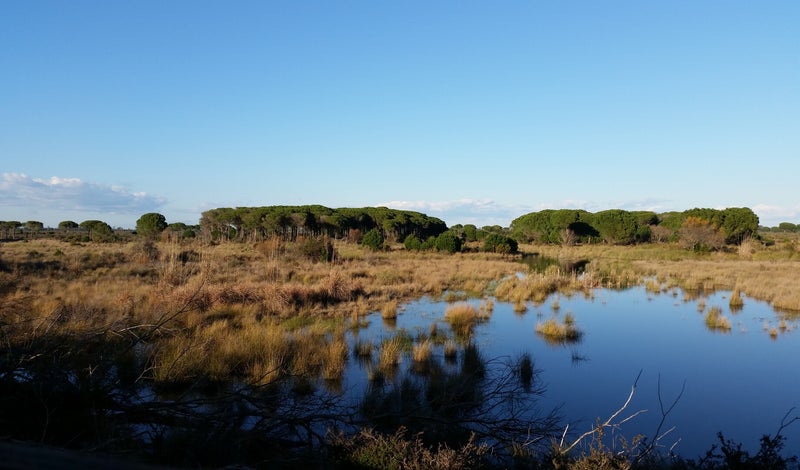








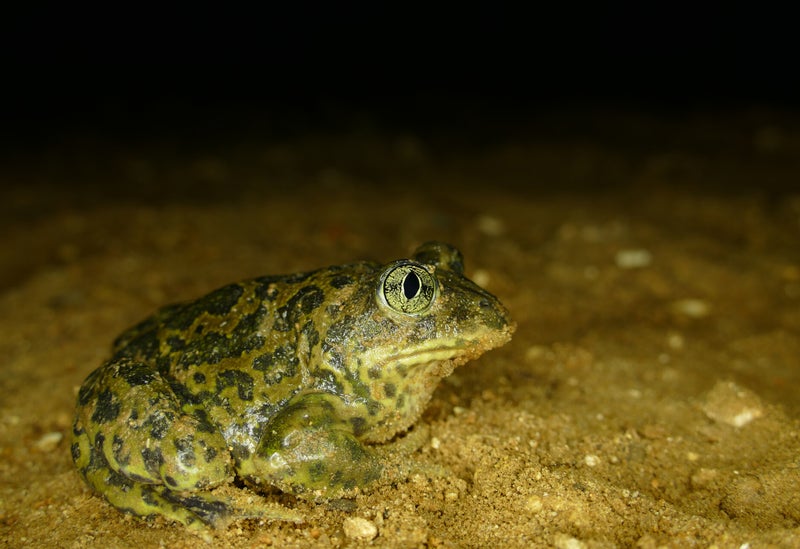






















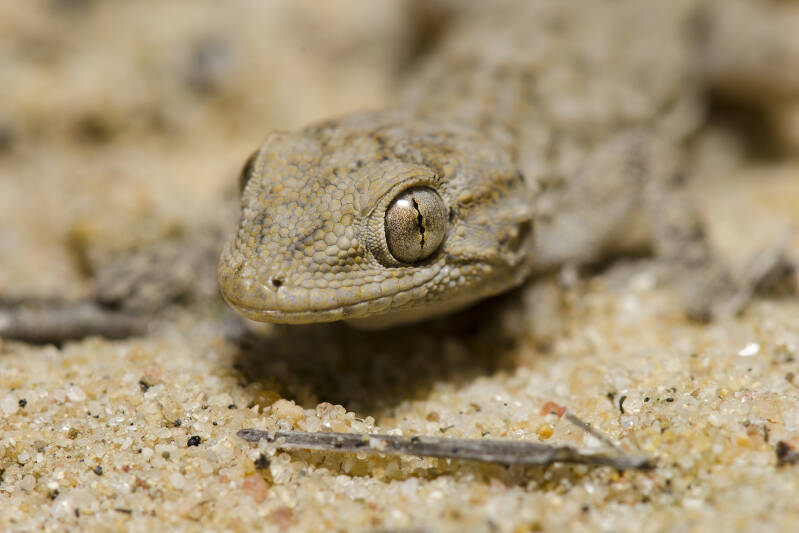
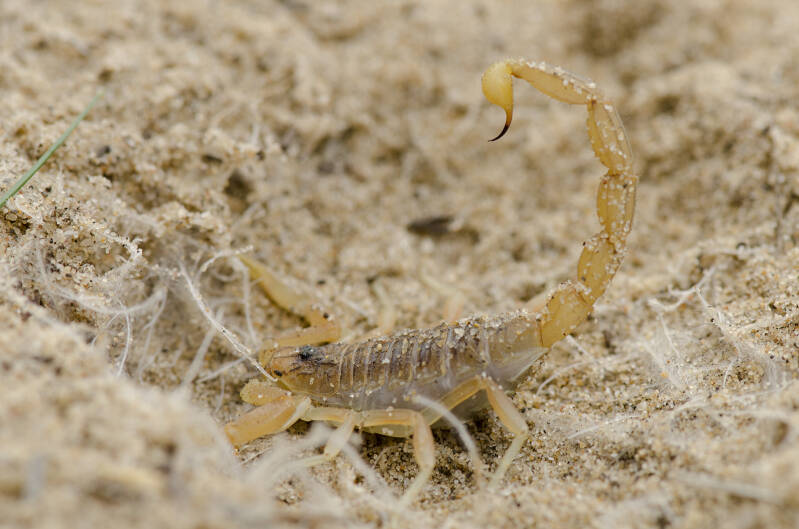


































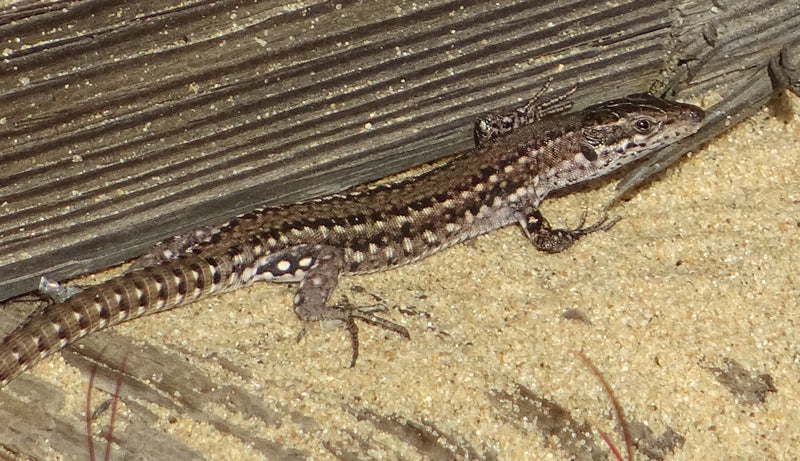















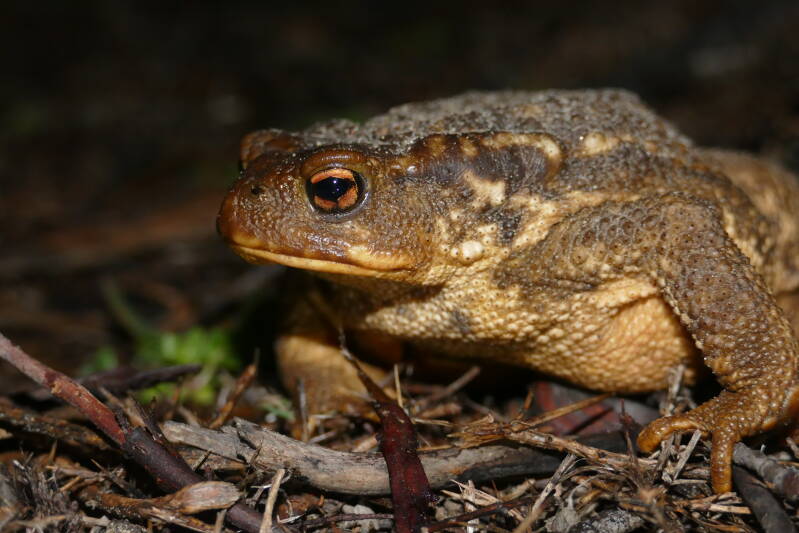























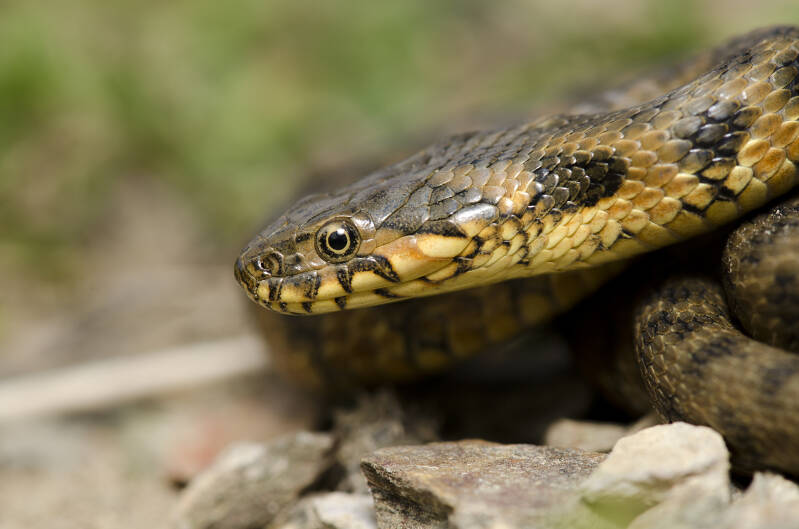























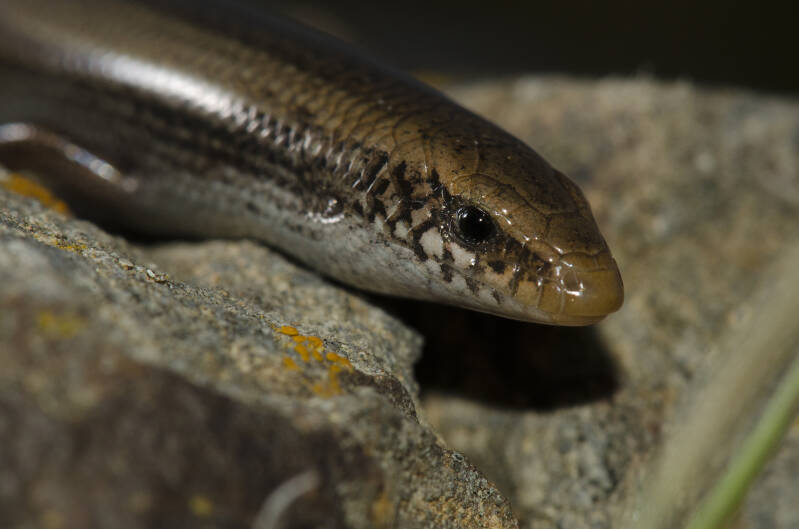







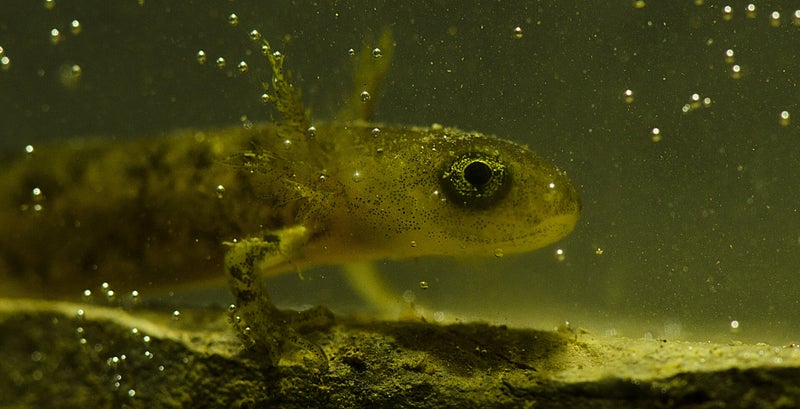











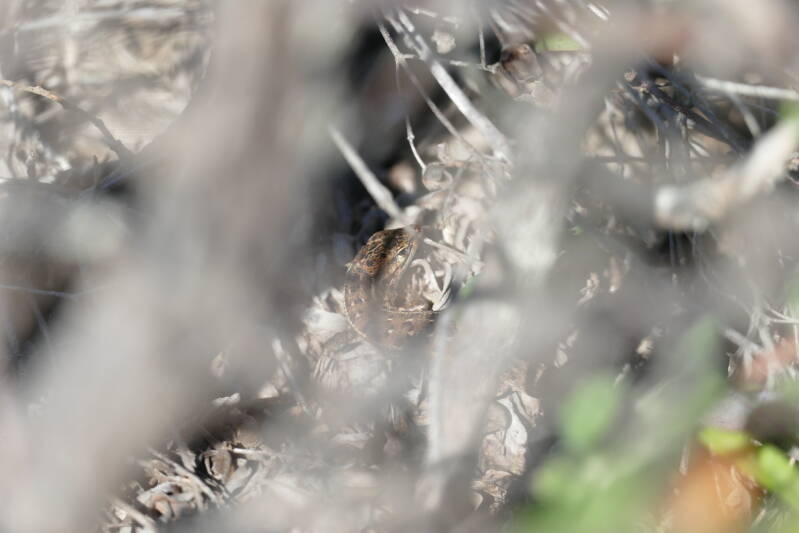















Create Your Own Website With JouwWeb